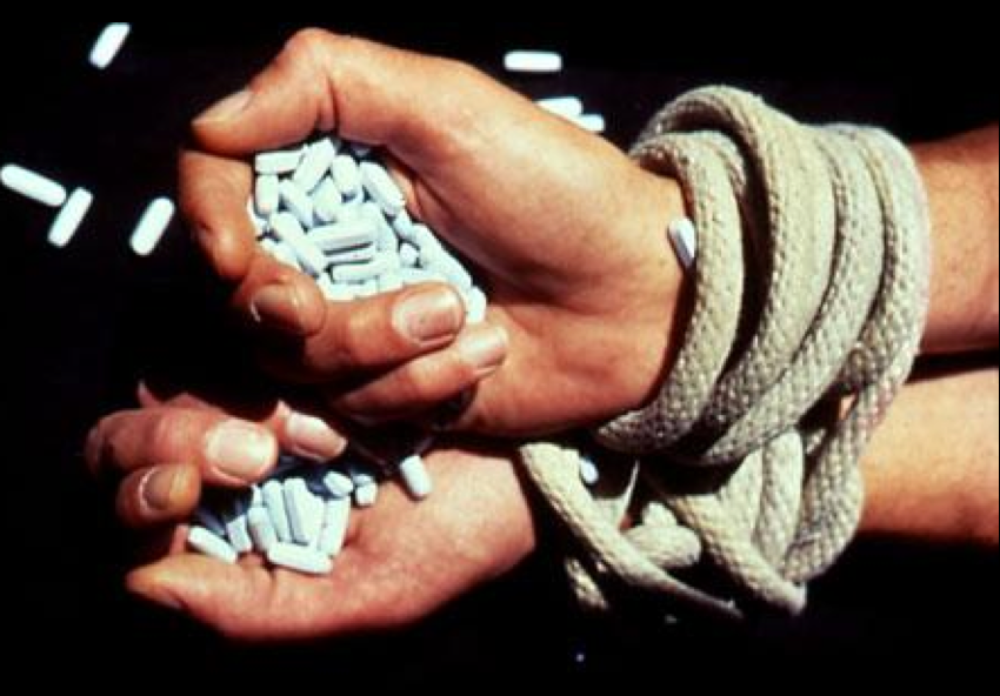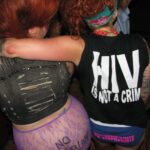The amount of people who have died worldwide from HIV/AIDS since stats have been gathered (36 million) is roughly now equal to the amount of people currently living worldwide with the virus (36 million). This morbid balancing scale moment in our planet's history dovetails an imbalance within the AIDS movement. Despite the fact that we are more than three decades into the virus and it has been 31 years since the Denver Principles were released, we are still not prioritizing the life chances of people living with HIV. This is clear when it comes to PrEP, a hot topic in New York City and elsewhere. There has been magazine articles, a New York Times debate series, town forums in various cities, twitter campaigns, and even t-shirts made, all centered around HIV negative people, with little to no attention paid to PrEP and people living with HIV.
Central to conversations about Pre-Exposure Prophylaxis should be its impact on people living with HIV. But it is not. At best the conversation is on people understood to be most at risk, but even then there is no real or nuanced discussion happening about who is most at risk, why they are most at risk, and how a medical intervention may or may not work for them. Added to this, much of the data behind PrEP is biased against trans people and women, with limited to little study done on the efficacy of drugs on anyone other than cisgendered men.
All of this means a missed opportunity for the AIDS movement, and more importantly, in various ways it is hurting people living with HIV. Imagine the conversation we could be having about PrEP that could be centered on people living with HIV, or those most at risk that are often overlooked:
- What does it mean that access to AIDS medication for negative people is being demanded while people with AIDS - with AIDS, not just HIV- are dying both in America and beyond?
- What does it mean that at the same moment queer and trans people of color are being criminalized for having condoms, a pharmaceutical prevention method is the “hottest” debate among urban white gay and queer men?
- What does it mean that a daily regimen of drugs can mean a life free of HIV for some, while living with HIV can mean a life sentence for others?
- Should we be concerned with the introduction of PrEP about HIV transmission rates in prison, and histories of forced medical interventions of inmates?
- Imagine if some industrious person created a TOMS like program for PrEP, where for every PrEP prescription filled in Chelsea of Hells Kitchen, someone living with HIV in a resource strapped location of the world received the meds they need to survive. (Okay, this gross. but even then I don't see people talking about!)
- And these are just some obvious conversations that come up for me that rely my biases. I can only imagine what could be discussed in terms of bio medical ethics, surveillance, and deeper considerations of race, class, gender, and sexuality.
Yesterday I posted an upcoming meeting about PrEP on the Visual AIDS Facebook wall and artist Jessica Whitbread asked how many women I think will show up. This was a powerful question that highlighted how far the conversations around PrEP and PEP is from the life saving and life enhancing work she and others are doing on the various front lines of this epidemic. Jessica through her work as an artist and as the interim global director of the International Community of Women Living with HIV prioritizes the livelihood of women living with HIV. It is easy to see how this focus on PrEP, and getting certain populations on PrEP, push women living with HIV lower down the HIV agenda. When was the last time the New York Times did multiple stories on women and HIV? When was the last time any major news outlet spent substantial resources on people living with the virus? Meanwhile, people living with HIV not only have needs, they also have the answers and the questions we need to move forward.
Soon after the introduction of life saving medication for people living with HIV in 1996, artist Max Greenberg began a series of photographs in which he used pills and pill bottles to work out his strong feelings about the pharmaceutical intervention that was enabling him a new lease on life. They are angry, thoughtful visceral works in which pills literally spell out his situation in some images, while—again, literally—fuck him and his friends over in other images. Central to the series is a frustration at the sense of bondage Max felt around the medication. Four years later he returned to similar themes and using pills and bodies explored issues around compliance in terms of medication. Given how much thinking many people living with HIV have done around medication, the pharmaceutical industry, personal autonomy and related issues, how amazing would it be to have people across the HIV spectrum, lead by those living with HIV, discussing medicine, dependency, and survival? Many people living with HIV have useful knowledge, insights, feelings, frustrations, and questions when it comes to PrEP. While some groups have included people living with HIV into PrEP conversations and action—like ACT UP NY, who have been crucial on calling for more information about PrEP to be made available to the public—the movement, as a whole, has not been centering PrEP conversation around people living with HIV.
+++
A few weeks ago a friend of mine, living with HIV, sent me a photo. It was him wearing a "truvada whore" t-shirt, giving the camera the middle finger. I messaged him back, who are you giving the finger to? To anyone who needs it.
I am not anti-PrEP. I am for anything that reduces the harm of the virus on people's lives. As the conversations are happening now, I'm not sure that PrEP is reducing the harm of HIV. It might be lowering transmission rates, but at what costs? Are we thinking through the implications this medical prophylaxis is having on people living with the virus both now and in the future? What systems of access and care are being altered by the emergence of PrEP and how is that impacting care for people living with HIV? As more people go on PrEP, how will that impact stigma for people living with the virus? When I first heard about PrEP I thought it was going to mean less sexual stigma directed at people living with the HIV. But anecdotally I'm not seeing that. Stigma runs deep. Instead I keep hearing about HIV-negative guys meeting online, more ready to hook up with each other because they are both on PrEP. Sexual apartheid remains. Fear resigns the day.
I want people to take PrEP if that is what feels right for them. And more importantly I want people to be aware of PEP, PrEP and other options that are available to help people save their own lives, those they care about and others in their community—and thrive. At the same time I want to be part of an AIDS movement that is mobilized around people most impacted. As we think through what 36 million dead, 36 million living with, means, let us also think through how we can centralize the movement around those living with HIV, even – and maybe especially— when it comes to prevention.
Ted Kerr
July 2014

